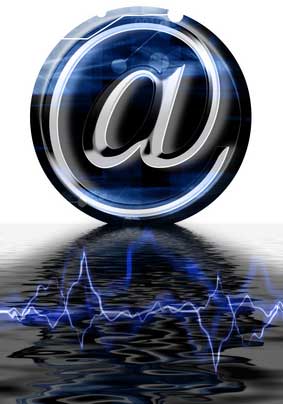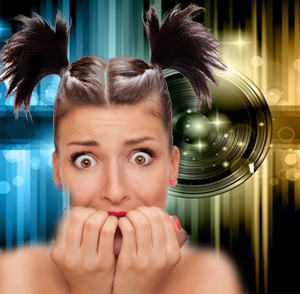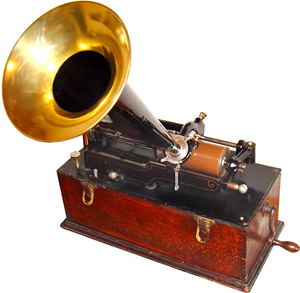Most small guitar amps have the control section – the part with all the knobs – on the same box as the speaker cabinet. It’s all one single unit. But there are also amps that have a separate “brain” unit that is separate from the speaker cabinet. They connect via a cable that you can plug and unplug, the same way your guitar plugs into the brain. Well, these 2-part amps can be a real advantage when recording. The reason for that is that you can run a long cable between the brain and the speaker cabinet, placing the cab in a more sonically desirable room or space while the player (who is often also the recording engineer in home recording situations), can sit by the computer or other recording console, monitoring the guitar with headphones.
Here is an article that shows you how to do this:
http://en.audiofanzine.com/recording-mixing/editorial/articles/isolating-your-speaker-cabinets-for-the-best-guitar-sound.html
Audio Recording
What Does Aliasing Mean In Digital Audio?
 You probably don’t need to understand what aliasing in digital audio means. Most people just wanting to record great sounding audio on their home recording studios don’t really ever need to have a deep understanding of digital audio theories and concepts. But knowledge is never wasted, and there are lots of folks who really do want to know the nitty-gritty technical stuff. So here is a little primer on aliasing.
You probably don’t need to understand what aliasing in digital audio means. Most people just wanting to record great sounding audio on their home recording studios don’t really ever need to have a deep understanding of digital audio theories and concepts. But knowledge is never wasted, and there are lots of folks who really do want to know the nitty-gritty technical stuff. So here is a little primer on aliasing.
The concept of aliasing is related to sampling frequency, so you might want to review our article – What Is Sampling Frequency? before we talk too much about aliasing. But it really isn’t that tough a thing to understand. Basically is all has to do with making sure that the number of pictures (samples) of our audio the analog-to-digital converter (ADC) is sufficient to represent that audio in computer language. Since it is commonly held that the range of human hearing is 20 Hz to 20,000 Hz, we want to make sure that if a sound happens that is at a frequency of 20,000 Hz (20 KHz), our converter takes pictures fast enough to capture at least 2 pictures in 1 cycle of the audio – 1 to represent the high point and 1 to represent the low point. That number may not be ideal, but technology can interpolate and smooth out curves enough to make the digital version sound close enough to the real (analog) sound. Of course it is the rare human who can actually hear a 20 KHz sound. But that’s another matter.
So in order to make sure our converter can take 2 pictures of a 20 KHz wave, it needs to be able to capture at least 1 picture every 40,000 cycles of a wave per second – 40 KHz. The standard was actually set a bit faster than that at 44,100 Hz, which is why you will see the term “44.1 KHz” so often. But what if a sound happens that is above 20 KHz? Bad stuff, that’s what. At least “inaccurate” stuff. That is what aliasing is.
Read more about it in this article by Michael Pinson, which is refreshingly easy to understand for such a technical subject.
http://www.prosoundweb.com/article/in_the_studio_digital_audio_aliasing_explained/
DJ Technique Tutorial – Stab Scratch
Someone recently told me that there was an entire segment of the audio crowd that I was not reaching very often, and that was the DJ and EDM (electronic dance music) crowds. So in order to start addressing that deficit, here is a video tutorial explaining how to do a common technique in the DJ bag of tricks, the stab scratch, by making use of mixer fades and cross-fades. This comes from DJ Angelo:
Mythbusters Test The Haunted Hum On The Halloween Episode
 The Mythbusters (Discovery Channel TV show) entered the world of audio during their Halloween special by testing the haunted hum or fear frequency. It is often said, as in a famous UK experiment that infrasonic audio – that is audio below the frequency of 20 Hz – can make people feel odd, anxious, uneasy, nervous or frightened if they don’t perceive the sound consciously. In fact infrasonic sound is thought by some to be the basis for people supposedly experiencing supernatural or ghostly events.
The Mythbusters (Discovery Channel TV show) entered the world of audio during their Halloween special by testing the haunted hum or fear frequency. It is often said, as in a famous UK experiment that infrasonic audio – that is audio below the frequency of 20 Hz – can make people feel odd, anxious, uneasy, nervous or frightened if they don’t perceive the sound consciously. In fact infrasonic sound is thought by some to be the basis for people supposedly experiencing supernatural or ghostly events.
So what better urban myth to test on Halloween than this for the Mythbusters? And so in a segment called The Haunted Hum, Jamie and Adam went out to a remote location where there were four empty cabins with nearly identical layouts. They set up nine huge sub-woofer type, stadium concert-sized speakers (Meyer Sound 1100-LFCs) underneath one of them and turned them up to just below the volume where they were causing things to rattle. And since the range of human hearing bottoms out at 20 Hz, the sound would not be heard.
Then they enlisted 10 volunteers to spend time in each of the cabins and report whether they felt different in any of them. I don’t want to spoil the surprise in case you have not seen the episode (you can see the Aftershow for it on the Mythbusters site to get the answer), but Jamie did report feeling a bit anxious, like he had had too much caffeine.
Watch for the episode on the Discovery Channel.
Hear The Oldest Vocal Recording Made in 1878
 A recording made in St. Louis in 1878 has recently been digitized so we could hear it without damaging the original medium. It is the oldest “playable” American voice recording. Speaking of audio recording medium, this voice and cornet were recorded on a piece of tin foil using the Edison phonograph. And you think YOU have it hard;).
A recording made in St. Louis in 1878 has recently been digitized so we could hear it without damaging the original medium. It is the oldest “playable” American voice recording. Speaking of audio recording medium, this voice and cornet were recorded on a piece of tin foil using the Edison phonograph. And you think YOU have it hard;).
Researchers mapped the groove’s (it was just one long groove) contours and fed the information into a computer, which converted it to audio to make it audible in the same basic way it would have been done in 1878. It’s really amazing.
Take a listen to it in this video below:
And you can see the original article from The Telegraph here: http://www.telegraph.co.uk/news/newstopics/howaboutthat/9632924/Voice-recording-from-1878-played-again.html